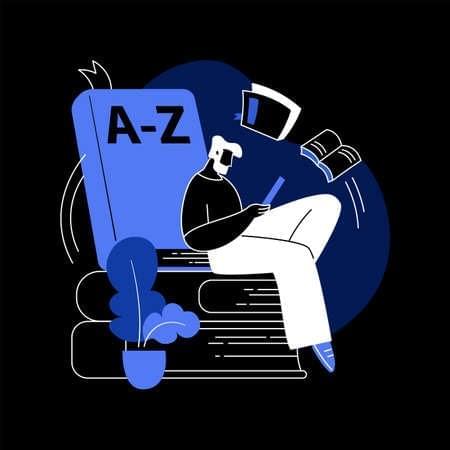47 examples of Scrum & Agile terminology and what they *actually* mean

How often do you sit in a meeting and just nod along to the conversation while not really understanding half the words you’re hearing? Don’t worry. It happens to everyone!
Scrum and Agile may be extremely valuable methodologies to adopt, but they are absolutely jam-packed with buzzwords, jargon, and weird terminologies. That’s why we’ve decided to write up the ultimate guide to all the confusing words and phrases that some people pretend to understand but are too nervous to ask about.
Let’s dive straight in, shall we?
Scrum & agile terminology demystified
Antipattern
Antipatterns are common solutions to problems that feel like they help but distract from the project’s main goal. Click here for more on antipatterns.
Architect
An agile architect creates an environment — through coaching and mentoring — that enables the development team to create software that they can easily modify to support changing requirements.
Backlog Refinement
Backlog refinement (also referred to as backlog grooming) is when the product owner regularly refines the backlog.
Backlog refinement usually involves some or all of the development team.
The aim is to ensure the backlog contains the appropriate items and is prioritized correctly, including any items ready to be delivered.
Behavior Driven Development
Behavior Driven Development (BDD) is an agile practice where team members discuss the expected behavior of a system to build a shared understanding of expected functionality.
Burndown Chart
Burndown Chart is the mechanism used to track work-in-progress. It is based on the principle that a meaningful project dashboard must contain a status report showing the current status of all active work tasks.
For more on burndown charts, plus a free burndown chart generator, click here!
Collective Code Ownership
Collective code ownership is the explicit convention that every team member shares a responsibility to make changes to any code file if and when it is required. There is no individual ownership for any of the code within the product, and everyone can make positive changes.
Continuous Deployment
Continuous deployment is a great agile tool that aims to reduce the time between writing a line of code and making that code available to users in production.
You can achieve continuous deployment by relying on an infrastructure that automates and implements the various steps leading up to deployment. This automation means the live application gets updated with new code after each integration successfully meets the release criteria.
Customer Development
Customer development is a framework that offers teams a way to use a more scientific approach to validate assumptions about your product and business. The Customer Development model is made up of four well-defined steps: customer development, customer validation, customer creation, and company building.
Daily Meeting (Stand-up)
The daily meeting (also called the daily stand-up) is one of the most commonly practiced Agile techniques. The short 15-minute meetings present an opportunity for the team to get together, update everyone on developments, and coordinate their activities.
Developer
In the world of Agile, a developer is more than just a code writer. A good agile developer embraces the ways of agile and understands why agile practices lead to better software. They need to take responsibility for estimating, planning, and managing their tasks and reporting their progress.
Emergence
The official Scrum Glossary defines Emergence as “The process of the coming into existence of prominence of new facts or new knowledge of a fact, or knowledge of a fact becoming visible unexpectedly.”
Put a bit more simply; it applies to anything you didn’t plan for that affects the workflow or product.
Epic
An epic is a large user story.
Estimation
In software development, an “estimate” evaluates the effort necessary to carry out a given development task. Many agile teams use story points as the preferred unit to estimate their tasks.
Exploratory Testing
Exploratory testing is commonly described as simultaneous learning, test design, and execution. It is an approach to testing that values the tester as an integral part of the test process. It focuses on discovery and relies on the guidance of the individual tester to uncover defects that other tests might not pick up.
Extreme Programming
Extreme Programming (XP) is an agile software development framework that aims to produce higher quality software and higher quality of life for the development team. XP is the most specific of the agile frameworks regarding appropriate engineering practices for software development.
Facilitator
A facilitator is essentially the leader of whichever event is happening. Their task is to assist the other team members in achieving the set goals. For example, if there is a meeting to identify new features, it’s the role of the facilitator to enable the team to come up with great ideas by ensuring they have everything they need to ideate.
Incremental Development
Incremental development is when each successive version of a product is usable, and each builds upon the previous version by adding functionality that’s visible to the user.
Integration
Integration in agile refers to any effort required for a project team to deliver a product suitable for release as a functional whole.
Iteration
An iteration is simply the period of time during which development takes place.

Kanban
Kanban is a visual workflow management method that uses cards, which represent tasks, to track progress. The word kanban is Japanese and roughly translated means “card you can see.”
Kanban Method
The Kanban Method is a means to design, manage, and improve flow for knowledge work and allows teams to start where they are to drive evolutionary change.
Kanban Board
A Kanban Board is a visual workflow tool consisting of multiple columns. Each column represents a different stage in the workflow process.
Lead Time
Lead Time is the time between a customer order and delivery. In software development, it can also be the time between a requirement made and its fulfillment.
Minimum Marketable Feature
A Minimum Marketable Feature (MMF) is a minor, self-contained feature that can be developed quickly and delivers significant value to the user.
Minimum Viable Product (MVP)
A Minimum Viable Product is the version of a new product with the fewest features possible while still being functional.
Planning Poker
Planning poker is a fun and valuable tool to use when prioritizing workload. For an in-depth look at planning poker, click here.
Points
Agile teams refer to units of time as “points” or “story points.” Points are simply a measurement that can estimate the overall effort required to fully implement a product backlog.
Product Goal
The product goal describes the complete project and is what every part of development is aiming for.
Product Owner
The product owner is the title given to a team member responsible for maintaining the conceptual and technical integrity of features or components. They are also accountable for backlog refinement and maximizing the product’s value.
Retrospective
Retrospectives are meetings that take place after a sprint ends. A retrospective aims to find out what went right and wrong and identify any opportunities for improvement. If you’re a newcomer to agile and scrum, check out our guide to retrospectives.
Scrum
Scrum is a framework for developing, delivering, and sustaining products in a complex environment.
Scrum Master
Scrum master is the name given to the person responsible for ensuring the team adheres to agile values and principles.
Sprint
A sprint is a short, fixed-length time frame for the development team to complete their assigned tasks.
Sprint Planning
Sprint planning is an event that occurs at the beginning of a sprint where the team determines which items from the product backlog they will work on during that sprint.
Stakeholder
A stakeholder is a person external to the Scrum Team with a specific interest in and knowledge of a product required for incremental discovery.
Story Mapping
Story mapping consists of ordering user stories along two independent dimensions. The horizontal axis represents a rough order of priority, while the vertical axis represents the level of difficulty involved in implementing that story.
Story Splitting
Story splitting is simply the act of breaking up one user story into smaller ones while still maintaining the value that the user story brings.
Sustainable Pace
A sustainable pace is an ideal that teams should aim for. A sustainable pace is both efficient and productive but is comfortable enough to avoid burnout.
Technical Debt
Technical debt is a concept that reflects the implied cost of additional rework. It is often caused by less than ideal design decisions, contributing to the total cost of ownership.
Test-Driven Development
Test-driven development is a style of programming in which three activities, coding, testing, and design, are tightly interwoven.
Timebox
A timebox is an agreed period of time that the team, or individual, has to complete a goal.
Unit Testing
A unit test is a short program fragment written and maintained by the developers on the product team that exercises some narrow part of the product’s source code and checks the results.
Usability Testing
Usability testing is an empirical, exploratory technique to answer questions such as “how would an end-user respond to our software under realistic conditions?”
User Stories
User stories are short descriptions of a feature, told from the perspective of the user. They often use the User Story Template to offer a clear representation of the feature.
User Story Template
The user story template is one of the most commonly recommended aids to write user stories. “As a [type of user], I want [feature] so that [reason for feature request].
Velocity
Velocity is a metric used to represent the total effort estimates associated with user stories completed during an iteration.
Still have questions? EasyRetro can help
Hopefully, this has cleared up any confusion you may have surrounding Agile buzzwords. If not, check out the EasyRetro blog, which is packed with insights and top tips to help you become an agile master.
For all your other needs, sign up for a free EasyRetro account today and get all the tools you need to succeed on your next project.